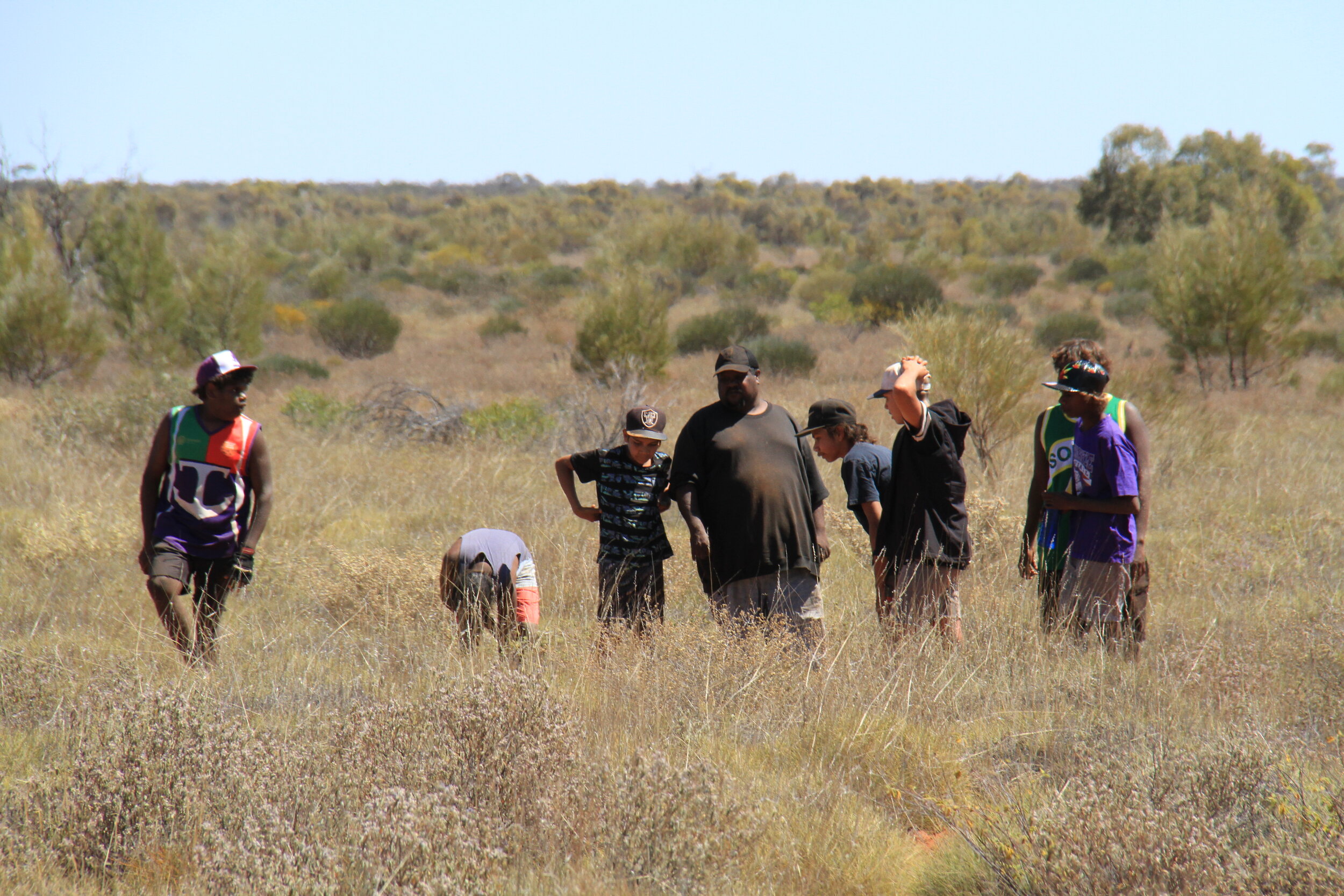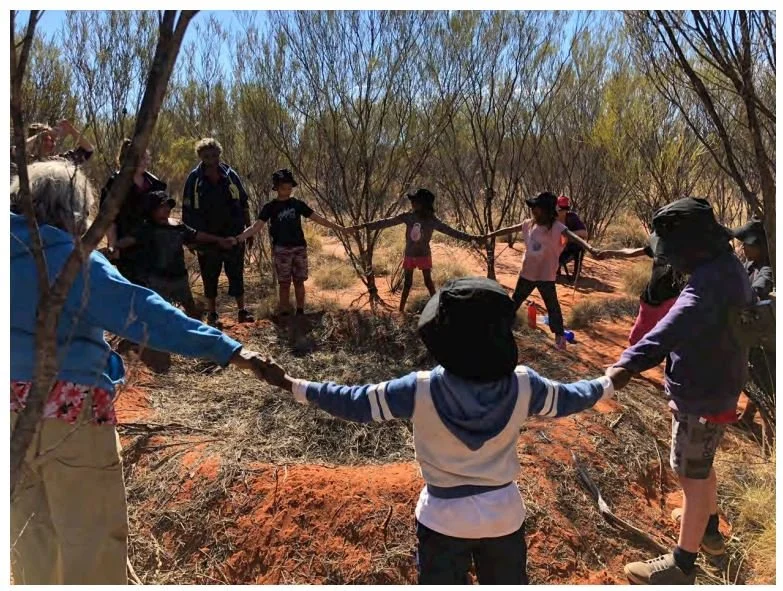
Tarlka Matuwa Piarku Country
The Martu people are connected through shared Country as well as through a common language, Martu Wangka (Martu talk), which is a recent amalgamation of several dialects, such as Kartujarra, Putijarra, Mandiljarra, that were spoken in discrete parts of the Martu lands.
In the eastern part of the determination area, the Tarlka Matuwa Piarku Martu peoples have an ancestral connection to the area. In the western determination area, traditionally associated with the western desert, the people (mostly from the north-east) migrated to the area from approximately 1925-1975, and rights were acquired to this area consistent to the Traditional Law and Custom.
The former pastoral properties of Lorna Glen (Matuwa) and Earaheedy (Kurrara Kurrara) are significant areas to the Martu people. Matuwa refers to a specific sacred site near the homestead on Lorna Glen station whereas Kurrara Kurrara is derived from the abundant Acacia tetragonaphylla on the former Earaheedy station.
The township of Wiluna is 170 kilometres from the Lorna Glen homestead. The population of the Wiluna township fluctuates between 200 to 300 people and within the greater Wiluna shire, the population exceeds 1000 people with a large proportion of fly in fly out mine workers .
Matuwa and Kurrara Kurrara are located at the confluence of two biogeographic regions – the Gascoyne and the Murchison regions. The Murchison bioregion is the dominant bioregion for Matuwa with low flat hills separated by alluvial plains, mulga woodlands and occluded paleodrainage channels. Kurrara Kurrara is located in the Gascoyne bioregion where the ancient drainage channels in the east of Kurrara Kurrara follow the songline of the Pikuta (Euro) who travelled east through the area creating the creeks as he travelled.
Jukurrpa is inscribed in the land forms throughout Matuwa and Kurrara Kurrara where hilly peaks (Yapu) signify dreamtime creatures and small
caves in breakaways are storied places where dreamtime actors camped overnight, stored items of significance or had permanent camps.
For Martu, native desert fauna are central figures in the Jukurrpa. They are part of the general creation story and at an individual level, they can be personal totems that connect people to land and ritual. Some native animals are companions and some act as guides in the landscape. Certain animals, Marlu (Red Kangaroo), Karlaya (Emu) or Partata (Bush turkey) are referred to as Kuka (bush meat) and are hunted by Martu on their lands.
Martu are taught to observe and learn about desert animals from an early age. Many can speak at length about the behavioural traits of certain animals and how to recognise the tracks and traces of animals present on their country.
The landscape at Matuwa and Kurrara has been shaped into its current form by Martu fire management over thousands of years and pastoralism in more recent years. The pre-European desert landscape was made up of patches of different ages of vegetation, which had been created through Martu fire management and specifically the continual lighting of smaller fire.
The pattern of vegetation ages that results is referred to as the ‘mosaic’.
The mosaic supports the overall biodiversity of the flora/fauna population by creating a variety of habitats where multiple species can thrive.


